It is an unwritten rule of Italian politics that the best solutions come only after getting close to the abyss. In a political system uniquely characterized by instability, the reelection of Sergio Mattarella as president of the republic on January 29 provides an institutional anchor that is projected to hold until 2029. The large parliamentary majority that backs the government of Prime Minister Mario Draghi — himself the putative frontrunner for the presidency — agreed on Mattarella after chaotic infighting, a decision which ultimately strengthens Draghi. Meanwhile, another highly reputed public servant, former Prime Minister Giuliano Amato, was nominated president of Italy’s Constitutional Court. It is hard to imagine another European country with three more capable, internationally-respected administrators at the top of its institutions.
But the election process, carried out as a sort of real-time televised whack-a-mole game with no less than 12 candidates smashed in less than a week, was a spectacle that once again exposed the fragility and confusion of Italy’s political system. Improvised strategies were thrown in the fan one after the other in a flurry of tweets and leaks; political leaders were discredited while their coalitions were breaking into pieces, failing to agree on candidates for the presidency. At the height of the confusion, the mother of all political ghosts appeared: a renewal of the 2018-19 radical populist alliance between the League and the Five Star Movement (M5S), flanked by the extreme-right Brothers of Italy. This anti-establishment and potentially anti-European and anti-Atlantic alliance could control a parliamentary majority and might have had its presidential candidate elected. It was probably that possibility that led a reluctant Mattarella, urged by Draghi, to accept a second mandate before it was too late.
Italy’s ineffective political system
Italy’s president does not wield executive powers. Nevertheless, their function as a guarantor of stability has become increasingly important in the last 20 years as new political forces have grown more vocal in challenging Italy’s traditional pro-European Union economic policies and Atlanticist foreign policies. In past years, the Brothers of Italy, the League, and M5S have also questioned the need for Italy to remain in the eurozone, blaming European integration for the dismal performance of the Italian economy in the last 30 years. It is easy to imagine that these issues will be important during the campaign for next year’s general elections. In the coming months, Italy will benefit from EU economic recovery funds but suffer from the tightening of monetary conditions in the eurozone. Blaming Europe and the euro will permit populist politicians to neglect the fact that most of Italy’s problems are homemade.
In fact, the euro has institutionalized — but also made more transparent — the external constraints with which Italy was already struggling in earlier phases of globalization. In a context of strong global interaction, a democratic state must rely on its ability to govern based on a balanced division of constitutional powers. It must be able to guarantee fundamental freedoms, but also the effectiveness of political decisions. Despite some quality administrations, Italy’s political system has failed in terms of effectiveness and consistency during the last three decades.
Italian society and economy have lacked far-sighted impulses from policymakers who were mainly concerned with assuring short-term consensus while struggling with financial instability. Even the highest levels of Italy’s institutional establishment were prone to demagogy, but without the financial means to fulfill it, resulting in the volatility of popular consensus. Since 1994, at each election, voters have punished the governing parties. The response of the party system has always been to call for new electoral laws as if the problem was the “demand of politics” by the citizens rather than the “supply” provided by the political forces. The latter expressed themselves, with a continuous sense of emergency, through the alternation between populist choices and the antidotes adopted by technical governments like Draghi’s.
Implementing new electoral laws was far from a sufficient remedy. The idea that political stabilization does not require reflection on the merits of policies has been misleading. In fact, by Italian standards, the last 30 years have been marked by more stable governments. Three of the Italian republic’s four longest-lived governments came after 2001. It has been assumed that governments’ short lives caused financial instability and increased debt, but perhaps the opposite is true in recent decades: The longer governments lasted, the more they moved away from a path of economic stability and from converging towards European partners. Silvio Berlusconi’s 2001-05 and 2008-11 governments and Matteo Renzi’s (2014-16) lasted three times as long as the average Italian government and in that span of time, they changed Rome’s route to fiscal stabilization.
Between 2001 and 2005, Italy’s primary budget surplus went from 5% of GDP to zero. Between 2008 and 2011, in the thick of the euro crisis, Italy came close to defaulting on its public debt. Between 2014 and 2016, Renzi broke the traditional pro-EU alignment of Italy’s center-left and extensively used the EU communication on flexibility within the rules of the Stability and Growth Pact to widen the fiscal margin of his government. Apparently, the longer Italy’s government stay in power, the stronger their deviations from fiscal discipline. Consequently, the problem appears to be more with the populist culture in Italian politics than with electoral mechanisms.
From the outset, the system of rules governing the single currency was aimed at restraining the EU member governments’ populist temptations. Even then, Italy’s public debt was a primary concern. The entire EU economic governance system can be interpreted as an attempt to anchor politics to stability and growth in the long term. Making political promises without caring for the consequences is more difficult in the EU framework. Unsurprisingly, the populists promising miracles do not tolerate the European straitjacket.
A coming reform of Europe’s fiscal rules?
In this sense, it is a fortunate coincidence that this latest demonstration of the ineffectiveness of the Italian political system has occurred while Europe is debating the reform of its economic governance rules. If Italy’s problem is the political culture of its establishment, the country would benefit more from reforms leading to European political union (in which sovereignty is shared among the 27 countries) than from the coveted fiscal union (in which debt is mutualized). Unfortunately, however, most Italian reform proposals for the EU rules seem intended to widen the government’s fiscal room or cancel part of Italy’s public debt.
There are many good reasons for changing the European fiscal rules to prevent them from aggravating recessions and make them work better with the common monetary policy. However, the resistance that Italy’s proposals will encounter among the European partners will not be predominantly of an economic nature, but rather of a political-economic one. Who will guarantee that once the fiscal constraints are loosened or the debt is partly canceled, Italian politics will not find it easier than before to indulge in populist practices? After all, such constraints force governments to spend resources on what is truly indispensable, rather than waste them. Shouldn’t we at least wait to see if the Recovery Fund (NextGenerationEU), the huge aid program launched by the EU in the wake of the recession caused by the COVID-19 pandemic, is put to good use? If it is, and if Italy’s capacity for growth increases, the current constraints will also be less stringent, and new European “recovery funds” could be launched with the consent of Italy’s partners. The wider use of common funds and mutual debt could become acceptable, making the Recovery Fund a permanent institution. Should this happen, permanent common government of the European economy could become necessary. The ensuing process of political interaction could lead to needed improvements in political systems across the member states, and in Italy in particular.
As the reelection of President Mattarella shows once again, Italy has its way to recover stability at the last moment. Draghi is likely now to remain at the helm until the end of the legislature. In the coming months, he can shore up the intense Recovery and Resilience Plan that commits Italy to dozens of structural reforms and EU-funded investments. Whichever coalition might emerge from Italy’s next elections will also need to stick to those commitments until 2026, if it wants tens of billions of euros disbursed by the EU. Even in the worst case, should Italy need a rescue package from EU partners, the ensuing dreaded “program” (reminiscent of those inflicted on Greece, Ireland, Portugal, Spain, and Cyprus during the euro crisis) could not but replicate reforms agreed in the context of the Recovery Fund.
In this complicated context, three initiatives would represent a test of maturity for Italy’s political forces. First, to tackle the short-termism of the Italian political system, the governing party leaders should explicitly underwrite the long-term objectives that have been agreed upon with the EU institutions through the Recovery Fund. Second, Rome should direct its energies toward accomplishing the reforms and investments agreed with the EU. Third, based on the eventual success of the Recovery Fund, it should call for a reform of European economic governance which brings political integration closer.
The Brookings Institution is committed to quality, independence, and impact.
We are supported by a diverse array of funders. In line with our values and policies, each Brookings publication represents the sole views of its author(s).

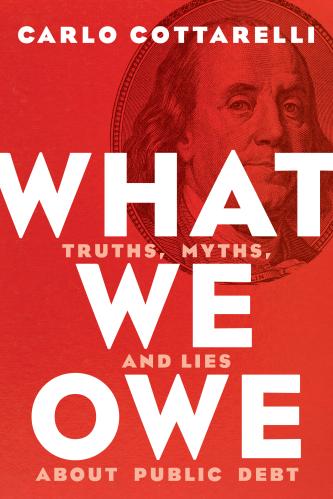
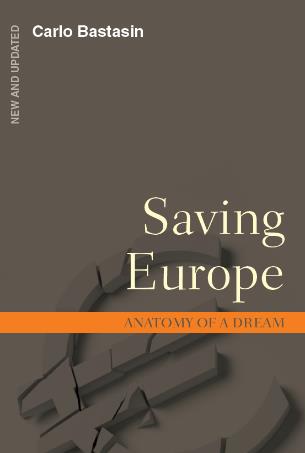
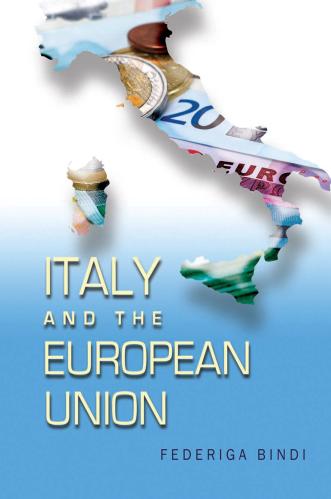

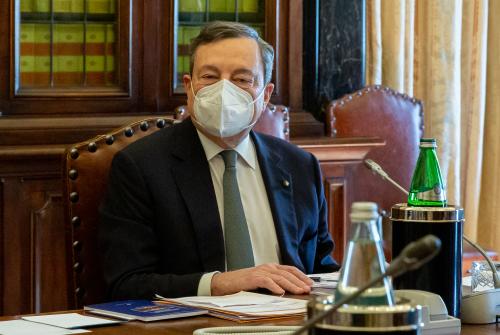
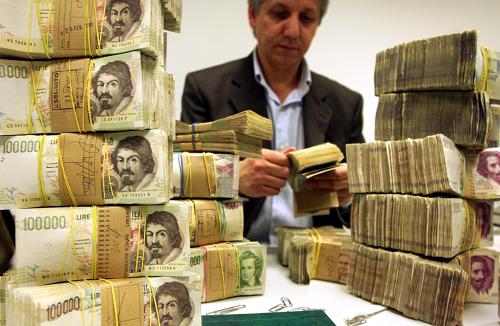


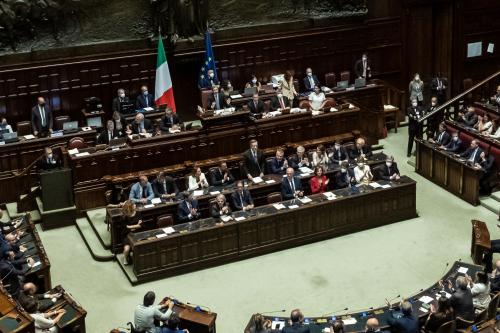
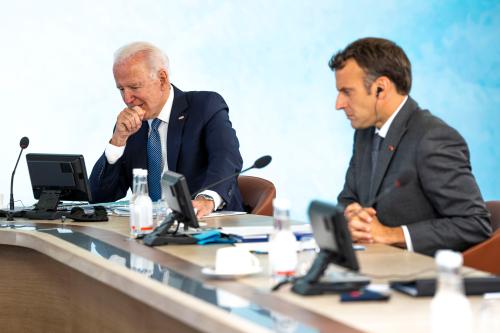
Commentary
Even after Mattarella’s reelection, Italy’s political system remains unstable
February 14, 2022